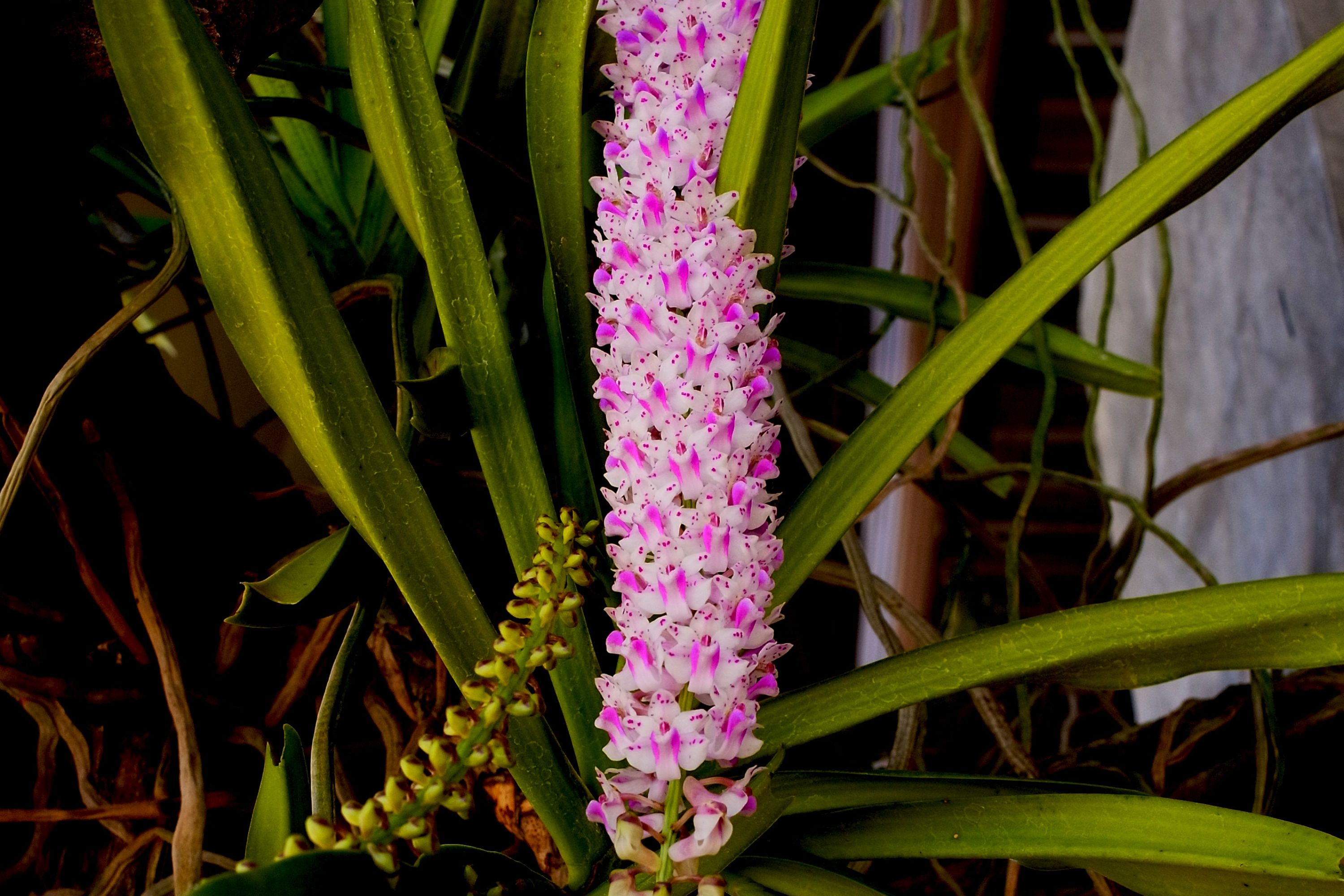Foxtail orchids
(Rhynchostylis retusa)

Description
Rhynchostylis retusa (also called foxtail orchid) is an orchid, belonging to the Vanda alliance. The inflorescence is a pendant raceme, consisting of more than 100 pink-spotted white flowers. The plant has a short, stout, creeping stem carrying up to 12, curved, fleshy, deeply channeled, keeled, retuse apically leaves and blooms on an axillary pendant to 60 cm (24 in) long, racemose, densely flowered, cylindrical inflorescence that occurs in the winter and early spring. It is famous for its use as an hair-ornament worn by Assamese women during folk dance Bihu on the onset of spring. The plant is an epiphyte growing on tree trunks in open forests or at forest margins at elevations of 300–1,500 m (980–4,920 ft). It can be found in Bhutan, Cambodia, China (Guizhou, Yunnan), India, Indonesia, Laos, Malaysia, Myanmar, Nepal, Philippines, Singapore, Sri Lanka, Thailand, and Vietnam. In India, the plant is most common in North-East, Orissa and Andhra Pradesh. In Andhra Pradesh, the plant is called by Telugu name Chintaranamu. Due to bio-piracy, the plant is on the verge of extinction in India. Rhychostylis retusa is recognized as the state flower of Arunachal Pradesh and Assam in India as well the Uva Province of Sri Lanka. Rhynchostylis (abbreviated Rhy in the horticultural trade) is a genus in the orchid family (Orchidaceae), closely allied to the genus Vanda (from which it differs in the one-lobed lip of the flower) and comprising four currently accepted species native to the Indian Subcontinent, China, Indochina, Malaysia, Indonesia and the Philippines. The name consists of a compound of two Greek elements: rhynchos 'beak' and stylis 'column' in reference to the very broad, fleshy column of the flower. The flowers are borne in dense racemes and are noted for their intense, spicy fragrance. Although lacking in pseudobulbs, the plants have leathery leaves that are drought-resistant. These orchids grow naturally in warm, moist, shaded tropical areas and will thrive in cultivation if given consistent warmth, uniform moisture and bright, but indirect light. Hobbyists wanting to grow them will need a warm, humid growing environment with gentle air movement. They can be grown in pots, but are better grown in baskets, owing to the extreme fleshiness of their roots. Their unusually fragrant blooms often appear in the slightly cooler winter months.
Taxonomic tree:







